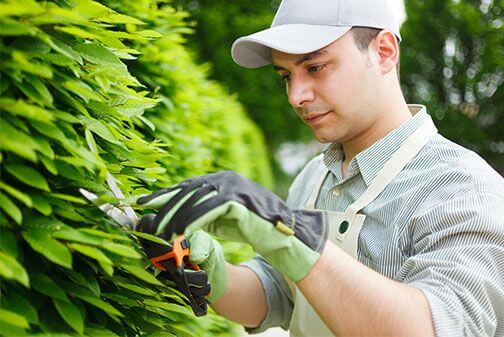Reduce Landfill Waste: Green Waste Solutions
Posted on 25/10/2024
In an era where environmental sustainability is of paramount importance, reducing landfill waste has become a critical objective for communities around the globe. Green waste solutions offer a pathway to not only minimize the environmental footprint but also enhance the efficiency and viability of waste management systems. This article explores various green waste solutions, their benefits, and how individuals and communities can adopt these practices to mitigate the escalating landfill crisis.
Understanding Landfill Waste
Landfill sites have traditionally been the primary method of waste disposal. However, these sites come with numerous drawbacks, including the emission of greenhouse gases like methane, the leaching of harmful substances into the soil and groundwater, and the sheer consumption of land space. With the rising awareness of these issues, the need for alternative waste solutions has grown.

Green Waste Solutions: The Basics
Green waste solutions encompass a range of practices and technologies aimed at reducing the amount of waste sent to landfills. These can include composting, recycling, anaerobic digestion, and the adoption of sustainable manufacturing practices. Each method plays a unique role in managing different types of waste efficiently.
Composting: Turning Waste into Resource
Composting is one of the most widely recognized green waste solutions. It involves the natural decomposition of organic materials, such as food scraps and yard waste, into a nutrient-rich soil amendment. By composting, communities can significantly reduce the volume of waste that ends up in landfills.
Benefits of Composting
- Reduces Landfill Waste: By diverting organic waste from landfills, composting mitigates methane emissions, a potent greenhouse gas.
- Improves Soil Health: Compost enriches soil, aiding in plant growth and reducing the need for chemical fertilizers.
- Conserves Resources: Utilizing compost reduces the reliance on synthetic fertilizers and water by enhancing soil structure and moisture retention.
Recycling: A Circular Approach
Recycling involves converting waste materials into new products, thereby conserving raw materials and reducing energy consumption. Materials commonly recycled include paper, glass, metals, and certain plastics.
Benefits of Recycling
- Minimizes Landfill Use: Recycling keeps materials out of landfills, reducing the associated environmental impact.
- Saves Energy: Manufacturing products from recycled materials often requires less energy compared to using virgin raw materials.
- Reduces Pollution: By cutting down on the demand for raw resources, recycling helps in minimizing the pollution caused by extraction and processing activities.
Anaerobic Digestion: Harnessing Biogas
Anaerobic digestion is a process that breaks down organic matter in the absence of oxygen, producing biogas (a mixture of methane and carbon dioxide) and digestate (a nutrient-rich substance). This technology can be applied to a range of waste types, including food scraps, agricultural residues, and wastewater sludge.
Benefits of Anaerobic Digestion
- Energy Production: Biogas can be used as a renewable energy source, reducing dependence on fossil fuels.
- Waste Reduction: It converts organic waste into usable products, thus diverting waste from landfills.
- Nutrient Recovery: The digestate produced can be used as a fertilizer, closing the nutrient loop in agricultural systems.
Sustainable Manufacturing: Innovating for the Future
Green waste solutions are not limited to end-of-life waste management. Integrating sustainability into manufacturing processes can significantly reduce waste generation from the outset. This includes designing products for longevity, using recyclable and renewable materials, and incorporating waste prevention strategies throughout the manufacturing chain.
Benefits of Sustainable Manufacturing
- Waste Minimization: By reducing material use and enhancing product life cycles, less waste is generated.
- Resource Efficiency: Sustainable practices optimize the use of energy, water, and raw materials.
- Economic Opportunities: Green manufacturing can open up new markets and drive innovation, providing economic benefits alongside environmental gains.
Community Initiatives and Education
Community engagement and education are vital to the success of green waste solutions. Local governments, schools, and organizations can play a pivotal role in raising awareness and encouraging the adoption of sustainable waste practices. Programs may include:
- Educational Campaigns: Informing the public about the benefits and methods of composting, recycling, and other green practices.
- Community Composting Sites: Providing accessible locations for residents to drop off organic waste.
- Recycling Drives: Organizing events to collect and recycle materials that are not typically picked up in curbside recycling programs.

Policy and Legislation
Governments at all levels can implement policies to support green waste solutions. This can include:
- Regulations and Standards: Setting standards for waste reduction and management practices.
- Incentives and Grants: Offering financial incentives for businesses and individuals to adopt sustainable waste practices.
- Infrastructure Investments: Funding the development of waste processing facilities, such as composting and anaerobic digestion plants.
Conclusion
Reducing landfill waste through green waste solutions is a multifaceted approach that requires the collaboration of individuals, communities, industries, and governments. By adopting practices like composting, recycling, and anaerobic digestion, and by investing in sustainable manufacturing, we can significantly decrease the amount of waste that ends up in landfills. This not only benefits the environment but also supports public health and economic innovation. Embracing these solutions and fostering a culture of sustainability will pave the way for a cleaner, greener future.










